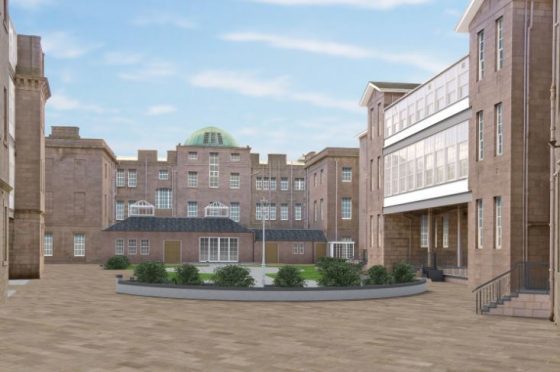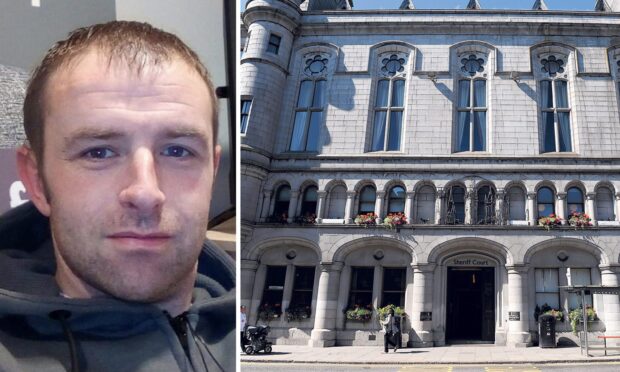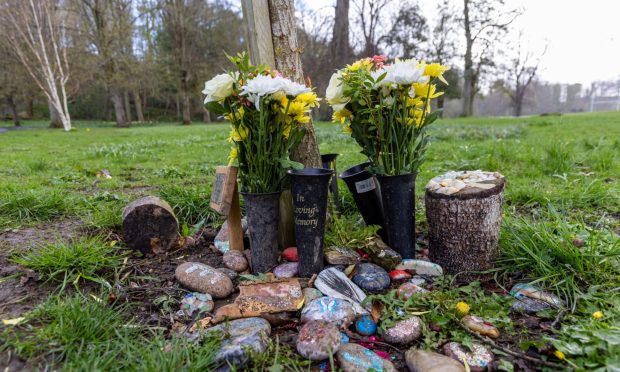Parts of Aberdeen’s oldest hospital will be demolished within weeks as £10 million plans to transform it into a hotel begin.
Property investor Charlie Ferrari has revealed that contractors have moved onto the site of Woolmanhill hospital – which was partly designed by the city’s most famous architect Archibald Simpson.
The development, which will become a new sister hotel to The Scotsman in Edinburgh, will take around three years to complete.
The plans to renovate the four A-listed buildings into a 52-bedroom hotel along with 42 residential apartments were approved by the council’s planning committee last year.
But many of the city centre buildings, some of which date back to the 18th century, have fallen into disrepair and are on the national buildings at risk register.
Last night Mr Ferrari said: “The guys are now on site and the first work is making it safe, they will then look at the buildings and there will be more substantial work next year.
“We will have to keep an eye on the weather as the year is nearly over and it is predicted to be a bad winter.
“The first schedule of works is the extraction of all asbestos from all four buildings to include all stores.
“As part of the same package, we are to start next week with the demolitions of the old stair towers to the Stephen Pavilion to make way for a future package of works to form serviced apartments.
“Further demolitions will also start next week adjacent to the Simpson Pavilion, again to make way for a future package of construction works to form the 50-bed hotel.
“All planning permissions and listed building consents with demolition warrants are in place to start these works.”
City centre councillor, Ryan Houghton, added: “We welcome any investment in the city and I’m sure residents will also be pleased that work is beginning on this very historic building.
“It is a good step forward for the city and as a council we are looking closely at this beautiful area of the city centre.”
The city’s hotel market has been badly hit by the oil and gas downturn in recent years – with an overabundance of rooms now available.
Woolmanhill ceased all medical functions in 2017 and workers will transform it into a hotel operated by the G1 group.
G1 also operates the Palm Court hotel on Seafield Road, and bosses have previously said they are confident the venture will be a success.
The history
Woolmanhill stood for centuries as a major city hospital, witnessing major advances in medicine.
It remains one of the few surviving hospital designs from the days before Florence Nightingale, the famed Crimean War nurse who brought massive hygiene improvements.
Building on the original hospital site began in 1740, to a design by William Christall, and it was conceived as the original Aberdeen Royal Infirmary.
It was overtaken when Aberdeen’s most famous architectural son – Archibald Simpson – designed the Simpson Pavilion in 1833.
A neo-classical face lift was completed by 1840 at what was then the staggering cost of £17,000.
In 1887, new buildings designed by W & J Smith & Kelly were constructed to the north of the site, providing new surgical, medical, pathology and laundry blocks.
Further expansion was required after the First World War but, due to the confined space available, the Foresterhill campus was bought in 1923.
Woolmanhill then became secondary to Foresterhill, but certain medical functions continued to be carried out there for decades.
In 1999, the NHS gave the go-ahead to close the site as a hospital, though facilities such as physiotherapy and moved in. The A-listed building closed in 2017.










